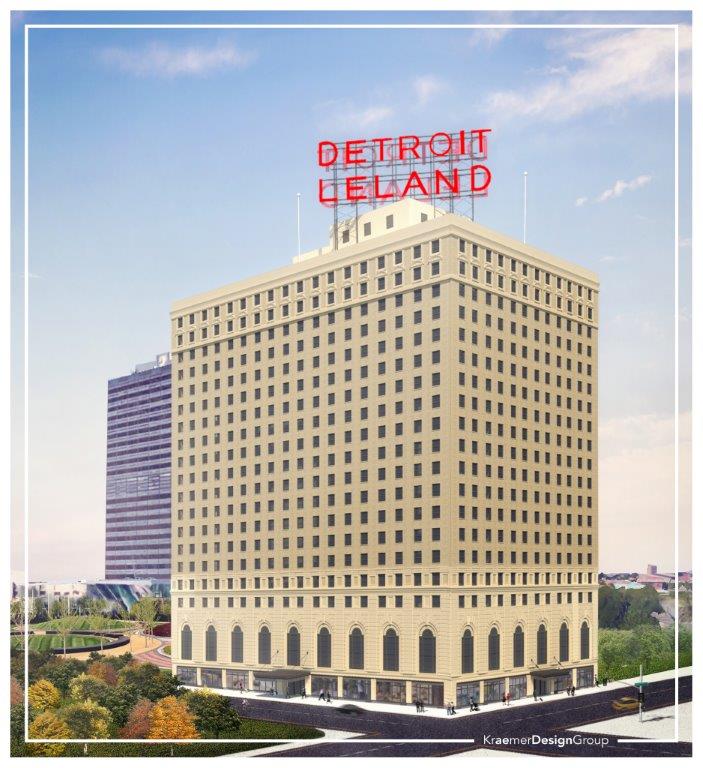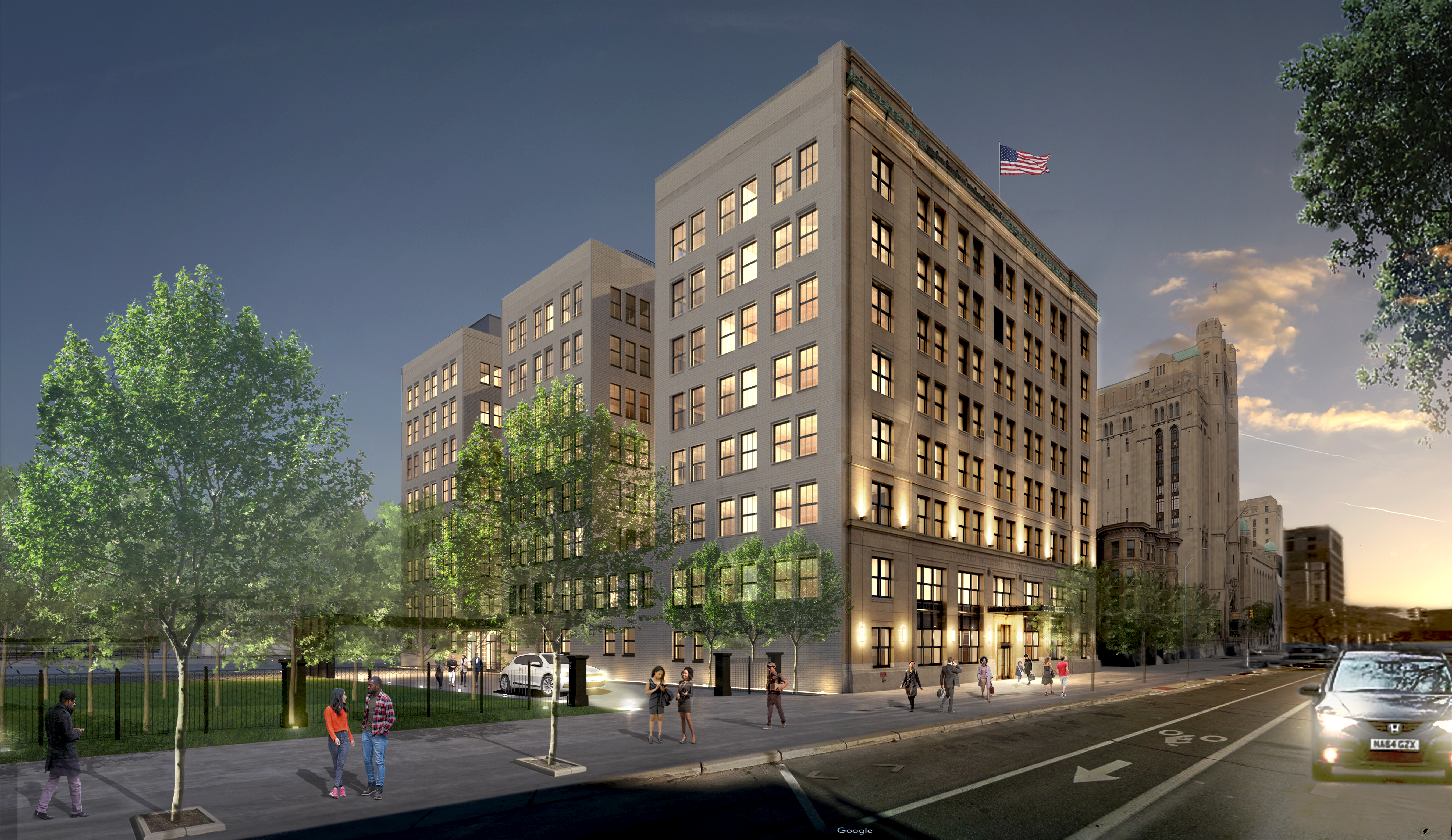Honoring the Work of Those Who Came Before Us
While new beginnings often define our work at Rockford, our projects within historical and iconic buildings require an in-depth understanding of the beauty, resilience and timelessness of a story already begun. From Furniture City to Motor City, we have used our services to continue the legacy of buildings that have withstood the test of time, honoring both their pasts and the vision of what’s to come.
640 Temple
Originally built in 1920 and designed by legendary architect Albert Kahn, the Standard Accident Insurance Co. building represented the advent of the automobile’s impact on the rapidly growing insurance industry and the changing workplace. The eight-story, classical revival building featured an employee-centric layout, including a recreation room, smoking area and parking garage. The Detroit Free Press noted the design would “assure the comfort and welfare of the company’s many employees” in their announcement of the building’s opening on Feb. 8, 1920. The construction, funded by some of the city’s most respected tycoons in the seed, real estate, lumber and fur industries, symbolized Detroit’s growing metropolis and preceded the construction of the historic Masonic Temple. Projected for opening in June 2020, the building will begin its exciting new chapter as the Temple Hotel and will keep the building’s original name chiseled into the frieze above the main entrance.
Rockford is serving as construction manager for 640 Temple’s 190,000-sq.-ft. redevelopment and renovation, involving more than 100 residential spaces and 10,000 sq. ft. of additional retail space. The project aims to restore the building to its original glory and will salvage many of its original architectural elements, marble and granite, in addition to antique furniture and historical documents. Visitors to the Temple Hotel will step into a space that joins rich history and modern flair, featuring restored woodwork, windows replicated to match the 1920 design and authentic pieces repurposed by Kravitz Design.
Hotel St. Regis
Connecting Cadillac Place and the Fisher Building, Hotel St. Regis opened its doors as a getaway to old-world elegance for General Motors executives and notable celebrities. Built in 1966 in the Neoclassical style, the hotel was designed to combine jewels of the past with comforts of the present, featuring fleur-de-lis tiles, 23-karat-gold trimmed walnut paneling, crystal chandeliers and antiques from around the world. The hotel has hosted many famous visitors, including Mick Jagger, Anita Baker, Aretha Franklin, Stevie Wonder and Jay Leno.
As the hotel enters its next chapter, it carries its standard of excellence with it. The 75,000-sq.-ft. renovation aims to cement the hotel as a New Center landmark and will feature room remodels, lobby redesign, bar addition and renovation of the iconic La Musique restaurant, including an expansive exterior patio. A nod to the hotel’s past, the suite where Martin Luther King Jr. stayed will be renamed in his memory and restored to its original condition.

Leland Hotel
Listed on the National Register of Historic Places in 2005, the Leland Hotel is the oldest operating hotel building in downtown Detroit. The 22-story building, which opened its doors in April 1927, was designed in the Beaux-Arts architectural style and was considered state-of-the-art for supplying air conditioning in every room. Compared to the Hotel St. Regis, the Leland has a more sordid guest book, including the infamous Purple Gang and Jimmy Hoffa.
Rockford is currently serving as the owner’s representative (development manager) of the Leland Hotel’s renovation and redevelopment. The building will transform into 340 market-rate apartments with a first floor comprised of retail and commercial space. When the doors reopen in 2020, the Leland will enter its new beginning in the same spirit it began in 1927 — one that aims to give visitors and residents an experience that is fresh, vibrant and modern.
Honoring the work of those who came before us means meeting the high bar of the work already completed and carrying this work on to the next chapter. At Rockford, we are proud to take part in watching the stories of these legendary buildings unfold.
previous Post
previous Post
